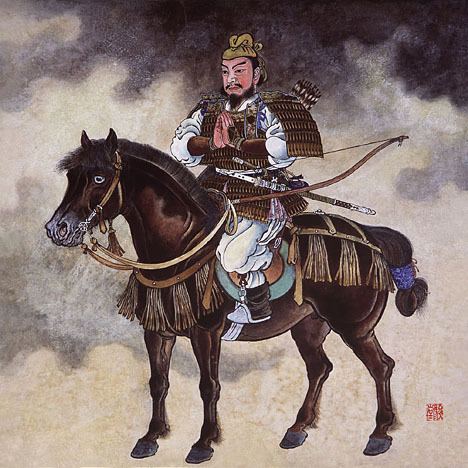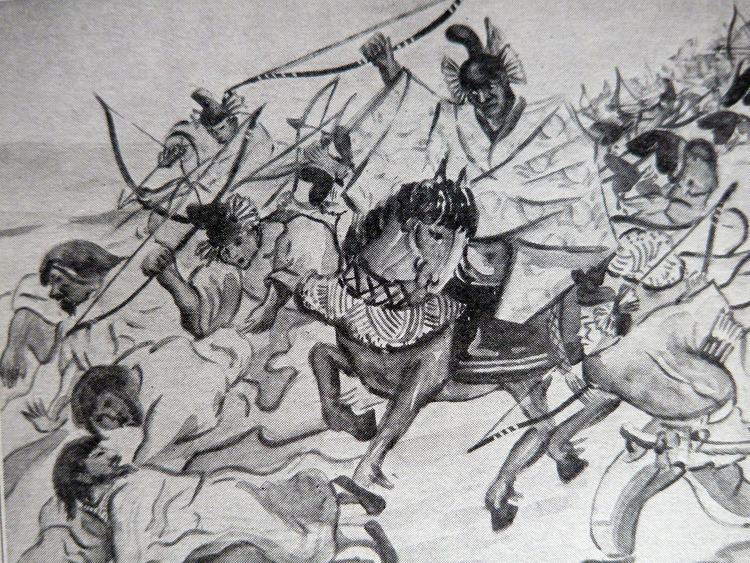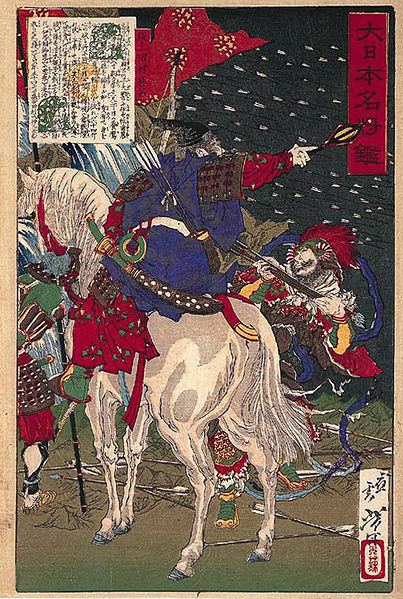Name Sakanoue Tamuramaro | Died 811 AD | |
 | ||
Kiyomizu dera sakanoue no tamuramaro s war shoes and weapons pt 3
Sakanoue no Tamuramaro (坂上 田村麻呂, 758 – June 17, 811) was a general and shogun of the early Heian period of Japan. He was the son of Sakanoue no Karitamaro.
Contents
- Kiyomizu dera sakanoue no tamuramaro s war shoes and weapons pt 3
- The First Great Shogun Sakanoue No Tamuramaro remembered at Tatsumi Jinja Shrine
- Military career
- Ancestry
- References

The First Great Shogun - Sakanoue No Tamuramaro remembered at Tatsumi Jinja Shrine.
Military career

Serving Emperor Kanmu, he was appointed shogun and given the task of conquering the Emishi (蝦夷征伐 Emishi Seibatsu), a people native to the north of Honshū, which he subjugated. Recent evidence suggests that a migration of Emishi from northern Honshū to Hokkaidō took place sometime between the seventh and eighth centuries, perhaps as a direct result of this policy that pre-dated Tamuramaro's appointment. However, many Emishi remained in the Tōhoku region as subjects of the expanding Japanese Empire and later established independent Fushu domains. After Emperor Kammu's death, the general continued to serve Emperor Heizei and Emperor Saga as Major Counselor (大納言, dainagon) and Minister of War (兵部卿, Hyōbu-kyō). He was the second man to be given the title of shogun. The first to receive this title was Ōtomo no Otomaro.

It is said that the famous Tanabata festivals and parades of Aomori Prefecture (also celebrated in the city of Sendai in Miyagi prefecture), which draw over 3 million people to the prefecture a year, were popularised in remembrance of Sakanoue no Tamuramaro's campaign to subdue the tribal societies then living in Tōhoku. These annual matsuri are called the Nebuta festival in Aomori City and Neputa Festival (ねぷた祭り) in Hirosaki City. They feature a number of gigantic, specially-constructed, illuminated paper floats. These huge festival structures are colourfully painted with mythical figures, and teams of men carry them through the streets as crowds shout encouragement. Aomori's great nebuta lanterns are said to hark back to Tamuramaro's innovative strategy in that early ninth century campaign. According to legend, the taishogun is remembered for having ordered huge illuminated lanterns to be placed at the top of hills; and when the curious Emishi approached these bright lights to investigate, they were captured and subdued. Until the mid-1990s the prize awarded for the best float of the parades was called the Tamuramaro Prize. However, there is no historical record that Tamuramaro went farther north than Iwate Prefecture.
Tamuramaro's name is linked with payments for construction projects at Kiyomizu Temple (Kiyomizu-dera) in the late 8th century.
Tamuramaro is reputedly buried at Shōgun-zuka, and his spirit is said to be guarding Kyoto still; but even if part of that tale is only myth, the recorded final resting place of the old warrior was near the village of Kurusu (Kurusu-mura 栗栖村) in Yamashiro's Uji district.
Ancestry
According to the Shoku Nihongi, an official historical record, The Sakanoue clan is descended from Emperor Ling of Han China. The Sakanoue clan's family tree shows that Tamuramaro is a 14th-generation descendant of Ling. Other research traces the origins of the Sakanoue clan from the Asian mainland, possibly through Baekje .
